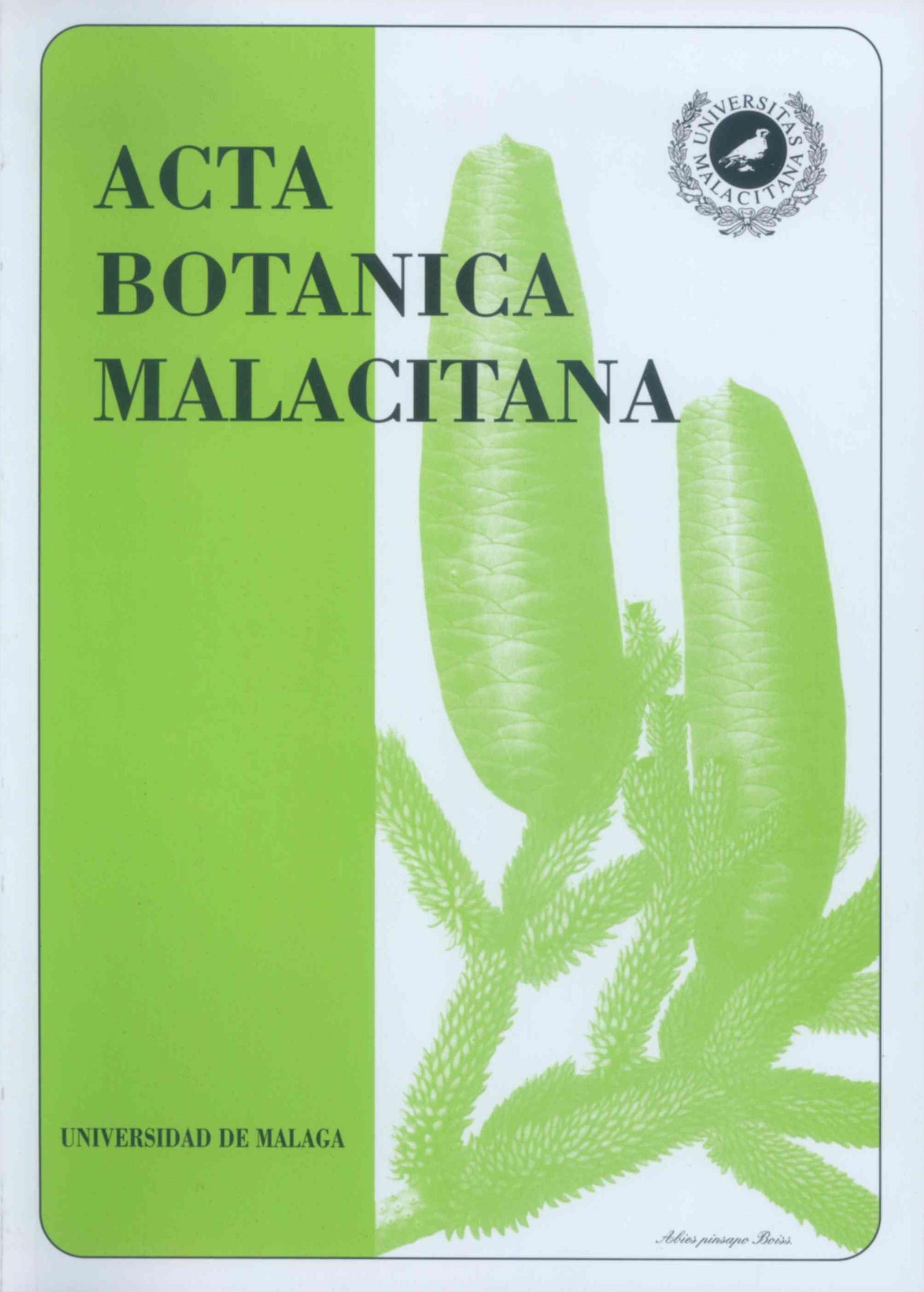The genus Amanita Pers. ex Hooker in the province of Leon
DOI:
https://doi.org/10.24310/abm.v16i.9152Keywords:
Taxonomy, Amanita, Basidiomycetes, NW of SpainAbstract
Twenty three taxa of genus Amanita in Leo?n province (NW Spain) are quoted. An identification key of all these taxa is provided, as well as their provincial distribution, ecology and their relation with the vegetation series.
Downloads
Metrics
References
GILBERT, E.J. -1940- Iconografia Mycologica. Vol 27. Supplementum I. Amanitaceae. Reimpresio?n de M. Canduso. Saronno, 1982.
MERLO, E.G. & M. TRAVERSO -1983- I fungi. Le Amanite. Sagep Editrice. Genova
MESPLEDE, B.V. -1980- Le genre Amanita. Bull Soc. Mycol. France, 96(1): 8-47
MOSSER, M. -1980- Guida alla determinazione dei fungi (Polyporales, Boletales, Agaricales, Russulales)*. Saturnia. Trento
DI?AZ GONZA?LEZ, T.E. & A. PENAS MERINO -1984- Bases para el mapa fitogeogra?fico de la provincia de Leo?n. Diputacio?n Provincial de Leo?n.
RIVAS-MARTI?NEZ, S. -1987- Memoria del mapa de series de vegetacio?n de Espan?a. Ministerio de Agricultura, Pesca y Alimentacio?n. ICONA.
Downloads
Published
How to Cite
Issue
Section
License
Those authors who publish in this journal accept the following terms:
a. The authors will retain their copyrights and guarantee the journal the right of first publication of their work, which will be simultaneously subject to the Creative Commons Attribution-Non-commercial 4.0 license whose full text can be found at <http: // creative commons .org / licenses / by-nc / 4.0> that allows third parties to share the work as long as its author and its first publication are indicated, and as long as it is not for commercial purposes.
b. Authors may adopt other non-exclusive licensing agreements for the distribution of the version of the published paper (e.g., deposit it in an institutional telematic file or publish it in a monographic volume) provided that the initial publication in this journal be indicated.
c. Authors are allowed and recommended to disseminate their work through the Internet (e.g., in institutional telematic archives or on their websites) before and during the submission process, which can produce interesting exchanges and increase citations of the published work. (See The effect of open access)







1.png)
